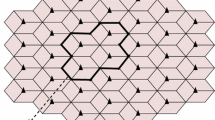Abstract
The sudden increase in subscribers and demand for high-speed data has prompted cellular operators to increase the number of base stations to fulfill the needs of mobile subscribers. This increase has subsequently increased the overall energy consumption, operational costs and carbon footprint of cellular networks. Accordingly, improving the energy efficiency of wireless networks has become a compelling challenge for researchers, vendors, and mobile operators, not only to reduce the operational costs, but to also reduce the environmental effects. The focus is on creating green cellular networks at base stations because base stations consume most of the energy. In this paper, we investigate how much energy is saved based on a Long Term Evolution (LTE) network by reducing the number and size of active macro-cells according to traffic load conditions. The proposed methodology is simulated on a set of real-sized LTE networks. The simulation results show that there are savings of up to 48 % in terms of both energy savings and operational expenditure with a 90 % cell coverage condition.











Similar content being viewed by others
Notes
Where the foreign exchange rate is 1USD \(\,=\,\) 3.28MYR (10 Jan. 2014).
References
Niyato, D., Lu, X., & Wang, P. (2012). Adaptive power management for wireless base stations in a smart grid environment. IEEE Wireless Communications, 19(6), 44–51.
Ericsson corporation report. (2013). Ericsson mobility report on the pulse of the networked society. Ericsson corporation. http://www.ericsson.com/res/docs/2013/ericsson-mobility-report-june-2013.pdf
Chen, T., Yang, Y., Zhang, H., Kim, H., & Horneman, K. (2011). Network energy saving technologies for green wireless access networks. IEEE Wireless Communications, 18(2), 30–38.
Alsharif, M., Nordin, R., & Ismail, M. (2013). Classification, recent advances and research challenges in energy efficient cellular networks. Wireless Personal Communications, 77(2), 1249–1269.
Hasan, Z., Boostanimehr, H., & Bhargava, V. K. (2011). Green cellular networks: A survey, some research issues and challenges. IEEE Communications Surveys & Tutorials, 13(4), 524–540.
Oh, E., Krishnamachari, B., Liu, X., & Niu, Z. (2011). Toward dynamic energy-efficient operation of cellular network infrastructure. IEEE Communications Magazine, 49(6), 56–61.
Chiaraviglio, L., Ciullo, D., Meo, M., & Marsan, M. (2008). Energy-aware UMTS access networks. In Proceedings of 11th International Symposium on Wireless Personal Multimedia Communications (WPMC’08), pp. 1–5.
Chiaraviglio, L., Ciullo, D., Meo, M., & Marsan, M. (2009, September). Energy-efficient management of UMTS access networks. In Proceedings of 21st International Teletraffic Congress (ITC 2009) (pp. 1–8), Paris.
Marsan, M., Chiaraviglio, L., Ciullo, D., & Meo, M. (2009, June). Optimal energy savings in cellular access networks. In Proceedings of IEEE International Conference on Communications Workshops (ICC Workshops) (pp. 1–5), Germany.
Zhou, S., Gong, J., Yang, Z., Niu, Z., & Yang, P. (2009, September). Green mobile access network with dynamic base station energy saving. In Proceedings of MobiCom’09 (pp. 1–3), Beijing, China.
Gong, J., Zhou, S., Niu, Z., & Yang, P. (2010). Traffic-aware base station sleeping in dense cellular networks. In Proceedings of 18th International Workshop on Quality of Service (IWQoS), pp. 1–2.
Xiang, L., Pantisano, F., Verdone, R., Ge, X., & Chen, M. (2011, September). Adaptive traffic load-balancing for green cellular networks. In Proceedings of 22nd IEEE International Conference on Personal Indoor and Mobile Radio Communications (PIMRC) (pp. 41–45), Toronto.
Lorincz, J., Capone, A., & Begusic, D. (2012). Impact of service rates and base station switching granularity on energy consumption of cellular networks. EURASIP Journal on Wireless Communications and Networking, 2012(1), 1–24.
Bousia, A., Antonopoulos, A., Alonso, L., & Verikoukis, C. (2012, June). Green” distance-aware base station sleeping algorithm in LTE-advanced. In Proceedings of IEEE International Conference on Communications (ICC) (pp. 1347–1351), Ottawa.
Johansson, K., Furuskar, A., Karlsson, P., & Zander, J. (2004). Relation between base station characteristics and cost structure in cellular systems. In Proceedings of 15th IEEE International Symposium on Personal, Indoor and Mobile Radio Communications (PIMRC 2004), vol. 4, pp. 2627–2631.
Goldsmith, A. (2005). Wireless communication (2nd ed.). Cambridge: Cambridge University Press.
Stefania, S., Issam, T., & Matthew, B. (2011). LTE—the UMTS long term evolution: From theory to practice (2nd ed.). New York: Wiley.
Mogensen, P., Na, W., Kovács, I. Z., Frederiksen, F., Pokhariyal, A., Pedersen, K. I., et al. (2007). LTE capacity compared to the shannon bound. In Proceedings of 65th IEEE Vehicular Technology Conference (VTC2007-Spring), pp. 1234–1238.
Auer, G., Blume, O., Giannini, V., Godor, I., Imran, A. M., Jading, Y., et al. (2010). Energy efficiency analysis of the reference systems, areas of improvements and target breakdown. EARTH Project Report, Deliverable, D2(3), 1–68.
Li, G. Y., Xu, Z., Xiong, G., Yang, C., Zhang, S., Chen, Y., et al. (2011). Energy-efficient wireless communications: Tutorial, survey, and open issues. IEEE Wireless Communications, 18(6), 28–35.
Malaysian Energy corporation. (2013). http://www.tnb.com.my/business/for-industrial/pricing-tariff.html. Accessed January 10, 2013.
Ramli, S. S., Hanapei, M. H., Yahya, M. R., Omar, N. A., & Almsafir, M. K. (2013). The impact of GPON technology on power consumption and carbon footprint in Malaysia. Journal of Purity, Utility Reaction and Environment, 2(2), 20–33.
Acknowledgments
The authors would like to thank the Universiti Kebangsaan Malaysia for the financial support of this work, under the Grant Ref: ETP-2013-072.
Author information
Authors and Affiliations
Corresponding author
Rights and permissions
About this article
Cite this article
Alsharif, M.H., Nordin, R. & Ismail, M. Cooperation Management Among Base Stations Based on Cells Switch-Off for a Green LTE Cellular Network. Wireless Pers Commun 81, 303–318 (2015). https://doi.org/10.1007/s11277-014-2129-9
Published:
Issue Date:
DOI: https://doi.org/10.1007/s11277-014-2129-9




